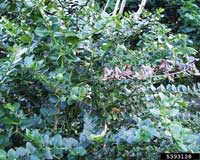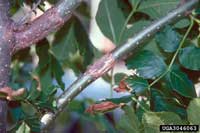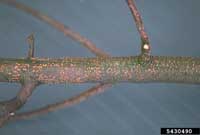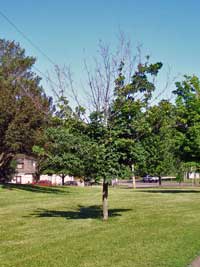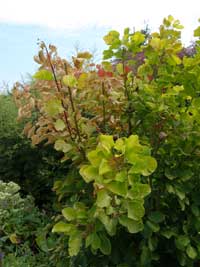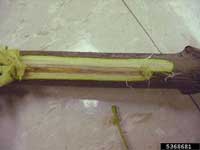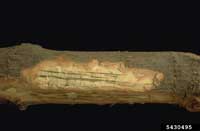Extension > Garden > Diagnose a problem > What's wrong with my plant? > Deciduous > Barberry > Dead branches or branch dieback
Barberry > Stems/branches > Dead branches or branch dieback
1 of 3
Botryosphaeria canker
Botryosphaeria dothidea
- Leaves on one or more branches wilt, turn brown and die
- Bark on affected branches is darker, cracked, or blistered at the site of the canker
- Wood beneath the canker is dark brown
- Common on shrubs stressed by drought, winter injury and other factors
- More information on Botryosphaeria canker
2 of 3
Nectria canker
Nectria cinnabarina
- Dead branches and twigs, often first observed in early spring
- Bark at the base of dead branches is often slightly sunken, discolored or cracked
- Tiny, pink, pale orange or cream colored cushion-like spore-producing bodies are visible in cracks in bark in spring
- In summer, smaller coral colored bumps push through cracks
- In autumn these spore-producing structures turn dark brown or black
- More information on Nectria canker
3 of 3
Verticillium wilt
Verticillium dahliae
- Leaves on one to several branches turn red to yellow, wilt, die and fall off
- Dark olive to gray streaks are often visible in the sapwood if the bark is peeled back
- Symptoms may appear in several branches or in the entire shrub
- Symptoms are often most obvious in late summer and autumn but can occur throughout the growing season
- More information on Verticillium wilt



